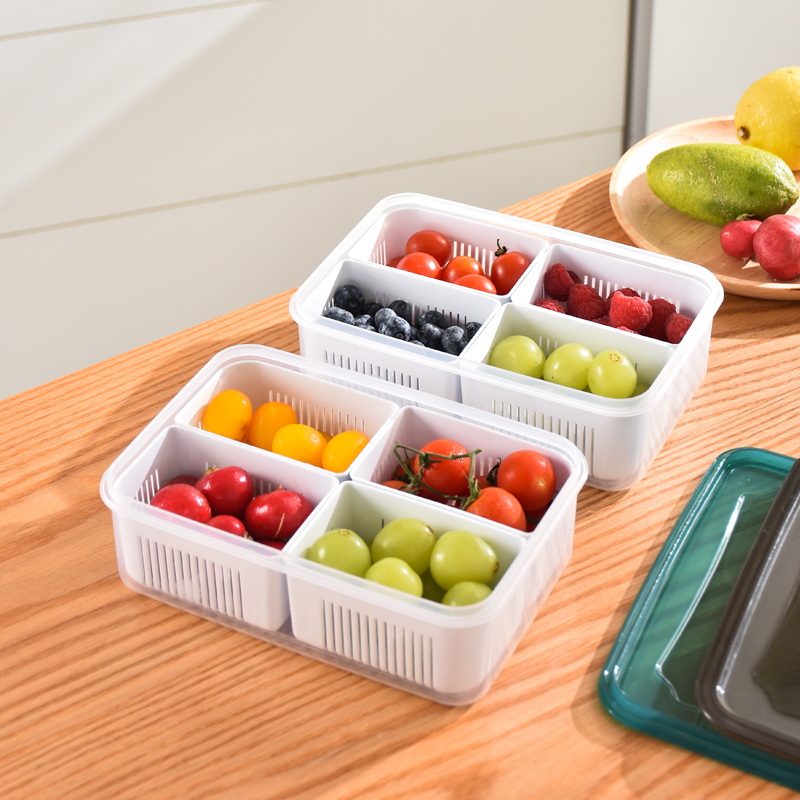In today’s fast-paced world, food storage boxes with lids have become indispensable for preserving freshness, reducing waste, and organizing kitchens. Whether you’re meal-prepping for the week, storing leftovers, or packing lunches, the right container can make all the difference. With the global food container market projected to grow significantly—driven by demand for convenience and sustainability—this guide explores the latest trends, key features, and tips for selecting the best food storage solutions.

The food storage industry is evolving rapidly, with consumers prioritizing durability, eco-friendliness, and versatility. According to recent market insights, the U.S. food container market alone is thriving due to the rising consumption of processed and frozen foods, alongside a shift toward sustainable materials like glass and biodegradable plastics. Here’s what’s driving the demand:
Preservation of Freshness: Airtight lids prevent moisture and air exposure, extending the shelf life of perishables.
Convenience: Lightweight, stackable designs save space in cabinets and refrigerators.
Sustainability: Eco-conscious buyers are opting for reusable containers over single-use plastics, aligning with global efforts to reduce waste.
Material Innovation:
Plastic Dominance: Affordable and versatile, plastic remains popular for its leakproof and lightweight properties. Look for BPA-free options labeled as food-grade (e.g., PP or Tritan).
Glass Containers: Gaining traction for their non-toxic composition and microwave-safe convenience.
Biodegradable Solutions: Brands are introducing plant-based materials like sugarcane fiber and PLA (polylactic acid) to meet eco-friendly demands.
Smart Features:
Vacuum-seal technology to lock in freshness for longer periods.
Modular designs with interchangeable lids for multi-purpose use.
Design Versatility:
Compartmentalized containers for portion control and meal prep.
Foldable silicone boxes ideal for on-the-go lifestyles.
Selecting the right container depends on your lifestyle, budget, and storage needs. Consider these factors:
1. Material Safety
Plastic: Opt for food-grade, BPA-free options. Ideal for lightweight storage but avoid microwaving unless specified.
Glass: Non-porous and stain-resistant, perfect for reheating meals.
Stainless Steel: Durable and travel-friendly, though often heavier.
2. Seal Quality
Test the airtightness by filling the container with water and shaking it. Silicone gaskets or locking clips enhance leakproof performance—critical for soups and liquids.
3. Size and Shape
Rectangular containers maximize fridge space.
Round boxes work well for salads and marinating proteins.
4. Sustainability
Support brands offering recyclable or compostable materials. Some companies even provide take-back programs to repurpose old containers.
5. Ease of Cleaning
Dishwasher-safe containers save time, while removable seals prevent mold buildup.
Meal Prepping: Portion out weekly meals in compartmentalized boxes.
Freezer Storage: Use vacuum-sealed containers to prevent freezer burn.
Pantry Organization: Store dry goods like grains and spices in transparent, labeled boxes.
Outdoor Activities: Lightweight, unbreakable containers are perfect for picnics or camping.
Q: Can I microwave food in plastic containers?
A: Only if labeled “microwave-safe.” Glass or ceramic alternatives are safer for reheating.
Q: How do I remove odors from plastic boxes?
A: Soak in a mixture of baking soda and water, or use lemon juice to neutralize smells.
Q: Are silicone lids better than plastic?
A: Silicone offers a tighter seal and higher heat resistance, making it a durable choice.
Innovations in the pipeline include smart containers with freshness sensors, self-cooling technology for outdoor use, and edible coatings that extend produce longevity. As consumers increasingly value sustainability, expect more brands to adopt circular economy models—recycling old containers into new products.
Investing in high-quality food storage boxes with lids is a small change that yields long-term benefits: less waste, fresher meals, and a clutter-free kitchen. Explore our curated collection of airtight, eco-friendly containers designed to simplify your life.